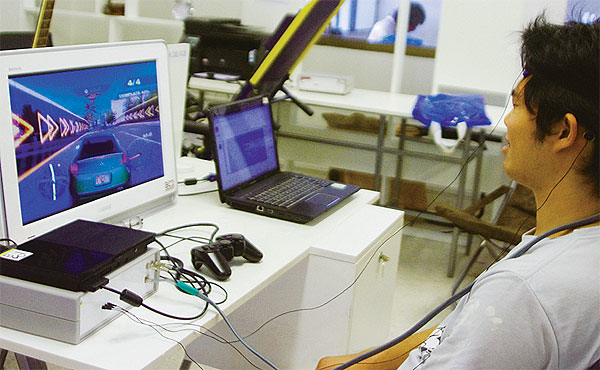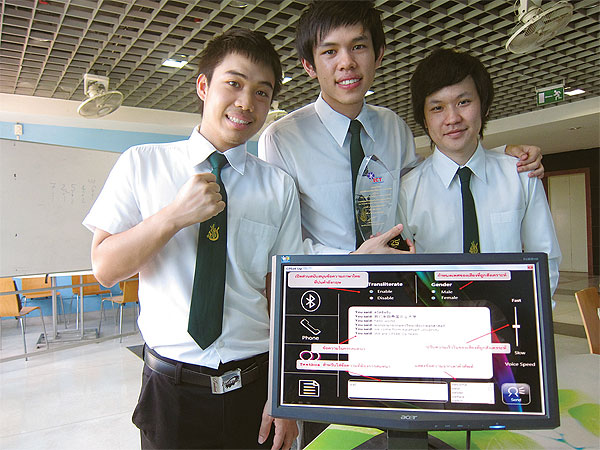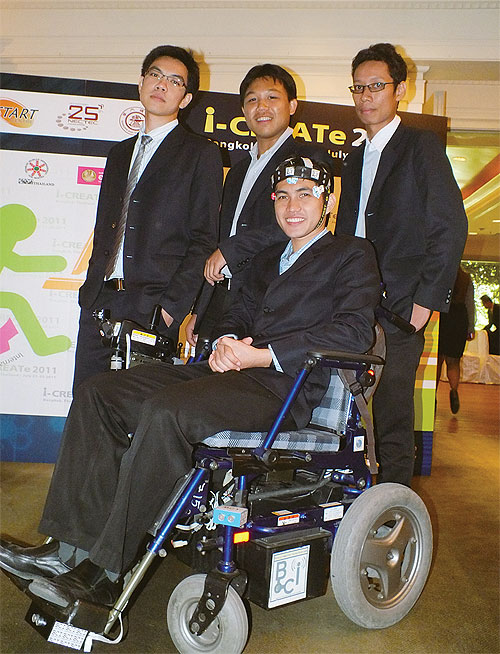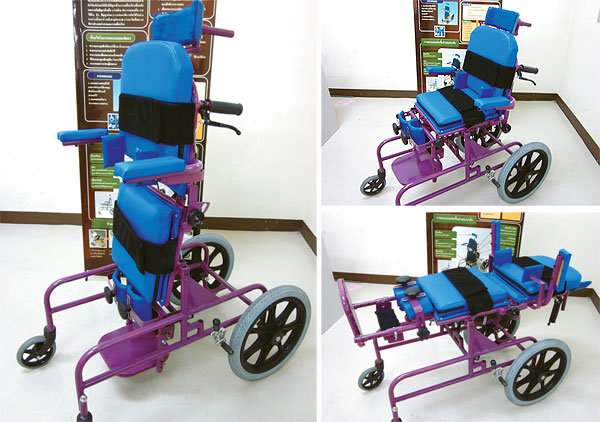Technology has come to the aid of people with disabilities, thanks to the ingenuity of university students whose gadgets, soon to go on view at i-CREATe 2011, could help bridge gaps in their communication with other people and enable them to do their daily chores on their own. i-CREATe stands for International Convention for Rehabilitation Engineering & Assistive Technology, and it is being organised by the National Electronics and Computer Technology Centre (Nectec) with cooperation from the Singapore-based Therapeutic, Assistive & Rehabilitative Technology Centre.
The exhibition will feature cutting-edge technology and innovations that are the result of research projects focussing on people with disabilities, such as impaired hearing and eyesight, undertaken by students in Thailand and overseas. There will also be workshops and seminars. One highlight is the Student Design Challenge forum that will showcase, among others, communication software, a sign-language translator, a brain-controlled wheelchair, and a universal standing wheelchair for children with cerebral palsy. The communication software is called CPEeK-Up (pronounced “speak up”) and was developed by Kasetsart University’s Faculty of Engineering. It combines automatic speech synthesis, Bluetooth technology and self-designed hardware to simulate communication assistance that serves as an intermediary between interlocutors. This software connects to a phone via Bluetooth and the designed hardware, and conveys speech signals to a PC. Handicapped people can engage in conversation using then text-based interface. The system then synthesises speech and sends it to the person the user is conversing with.
This hybrid EEG-HEG based neuro feedback device can help with disorders associated with hyperactivity. Phiradet Bangcharoensap, part the team that developed the software, said it is an automatic telecommunications relay service program that helps people with speech disorders to be able to talk to others via the phone. The program can synthesise both Thai and English, in male or female voices, and features spell-checking and auto vocabulary guessing. It also has a transliteration service supporting speech synthesis of mixed up Thai-English text.
Phiradet said the existing telecommunications relay service (TRS) allows people with speech disorder to access telecommunication technologies, and they typically use operators, known as communication assistance (CA), to relay conversations between a handicapped person and an interlocutor. It thus may be discomforting in terms of privacy.
Phiradet explained that the program will improve the access of people with disabilities to today’s communication technologies and facilitate their ability to earn. “Because this entire software is based on an automatic system, it can lower the cost of deploying TRS in Thailand and reduce privacy concerns,” he said. 
This program, with text-to-speech technology, helps handicapped people communicate by connecting their phones via Bluetooth technology. Mahidol University’s Brain Computer Interface Laboratory (BCIL) will showcase two gadgets. The first is Hybrid EEG-HEG, a neuro feedback device that helps in the treatment of hyperactivity disorder. Supassorn Rodrak, one of the team that developed the device, explained that Attention Deficit/Hyperactivity Disorder (ADHD) is a brain disorder that affects 6.5% of children in Thailand. The current method for treatment is by drugs, but that generally leads to side effects such as vomiting, dizziness and headaches. Neuro feedback is an alternative treatment that can beat these side effects.
She said the signals often employed in neuro feedback are electroencephalogram (EEG) and hemoencephagram (HEG). EEG is brain wave that changes its frequency in conjunction with brain activities. HEG is the measurement of blood flow in the brain that changes with oxygenation of blood. Both signals have their advantages and drawbacks. To eliminate the disadvantages of both signals, her team has proposed the Hybrid EEG-HEG neuro feedback device that employs both signals to achieve the highest accuracy. The hybrid system can efficiently eliminate artifact problems occurring when using only the EEG. Moreover, the system can improve the low changing rate when using only HEG.
 A brain-controlled wheelchair. Besides ADHD, the device can also serve those suffering from autism or Alzheimer’s disease, and general people who want to exercise their brain. The neuro feedback is a standalone system that can be deployed both at hospital or at home. The other project from Mahidol University is the brain-controlled wheelchair developed by its PhD students. It makes use of a hybrid EEG and electrooculogram (EOG) brain-computer interface system for practical machine control. Yunyong Punsawad, one of the team that developed it, pointed out that the problems with existing brain-computer interface (BCI) systems are to do with practical issues such as accuracy of various subjects, the number of sensors, and the time involved for training.
A brain-controlled wheelchair. Besides ADHD, the device can also serve those suffering from autism or Alzheimer’s disease, and general people who want to exercise their brain. The neuro feedback is a standalone system that can be deployed both at hospital or at home. The other project from Mahidol University is the brain-controlled wheelchair developed by its PhD students. It makes use of a hybrid EEG and electrooculogram (EOG) brain-computer interface system for practical machine control. Yunyong Punsawad, one of the team that developed it, pointed out that the problems with existing brain-computer interface (BCI) systems are to do with practical issues such as accuracy of various subjects, the number of sensors, and the time involved for training.
The team has proposed a hybrid framework for the brain-computer interface to be controlled by machine. The EOG is employed to control a turn to left or right while the electro dhencephalogram (EEG) is used to control forward and backward motion, or to bring it to a halt. By using just two- channel biosignals, an average accuracy of more than 95% can be achieved, said Yunyong. 
This wheelchair for children with cerebral palsy is designed to operate in both reclining and standing positions. Automatic control was added in the system to enhance efficiency of movement, accomplished via an automatic forward and prevention module. Infrared sensors are used to detect obstacles while the wheelchair is in motion. Line tracking is a simple, automatic forward method. The system design is suitable and takes less time to set up. Meanwhile, a team from Thammasat University will unveil a universal standing wheelchair for children with cerebral palsy. The device can be adjusted to recline or stand erect, and it’s meant for children with weak muscles.
The wheelchair is designed for easy use. It comes with a trolley so that parents can adjust to standing position without the need to move the child. Several other innovative items will be on view at i-CREATe 2011 that runs from July 21-23 the Swissotel, Nai Lert Park, in Bangkok, with HRH Princess Maha Chakri Sirindhorn presiding over the formal opening on July 22.